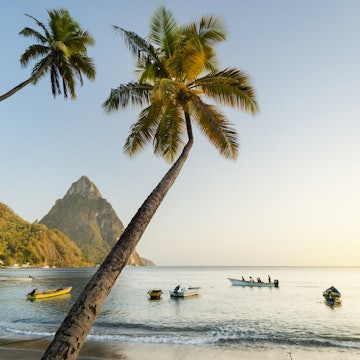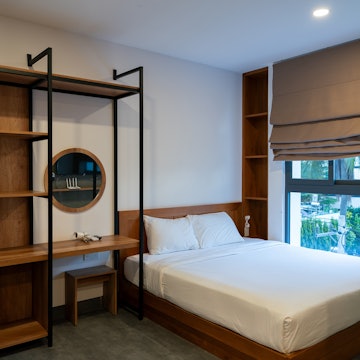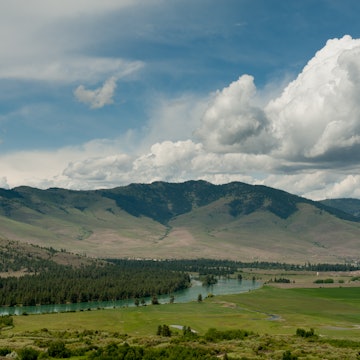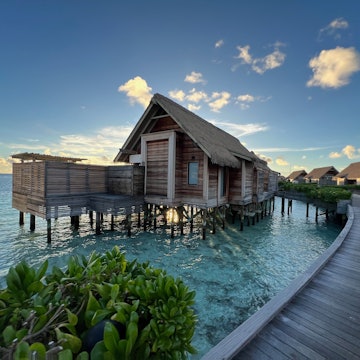
The 14 best places to visit in Montana


A small cabin on the shore of Flathead Lake in Montana. Jonathan Eberle/Getty Images
The wide open spaces of Montana are famous for their bucolic beauty and classic “Old West” charm. Any meandering road trip itinerary or quick weekend getaway has a bounty of options to choose from, and every corner of the state offers both small-town charm and staggering natural beauty.
As you make your way around Montana to see and experience it all, it can be a challenge to figure out exactly where to go and spend some quality time (along with your hard-earned money).
From festive community events during the summer season to exhilarating places to get out and enjoy the great outdoors, these are the best places to visit in Montana.

1. Glacier National Park
Best place to hit a hiking trail
The Crown of the Continent in northwest Montana, Glacier National Park, is a true choose-your-own-adventure for hiking trails. First established as a national park in 1910, this wild and wonderful area has the most extensive network of glaciers in the continental US, a total of 25 within park boundaries. You can also drive Going-to-the-Sun Road to catch stunning views of Jackson Glacier. If you’re up for a challenge, try hiking the Many Glacier trails to get marvelous views of Grinnell Glacier.
For those just getting introduced to Montana hiking trails, head for the Hidden Lake Trail departing from the Logan Pass Visitor Center. Clements Mountain provides a scenic guidepost along this approximately 5-mile round-trip hike. It’s visible above the wildflower meadows of Hanging Gardens. For those ready for a bigger challenge, the park's signature hiking trail, the Highline Trail, also departs from Logan Pass. While you’re here, don’t miss the chance to see the park’s largest lake and densest stretch of temperate rainforest at Lake McDonald Valley.
Planning tip: Finding parking can be the most challenging aspect of visiting the famous Logan Pass – the highest point along the Going-to-the-Sun Road. The park's free summer shuttle system ensures you'll never be turned away because of parking capacity.

2. Butte
Best place for Western history
Wild West history is on full display in Butte, Montana, near the western slopes of the Continental Divide. This mining town experienced its boom in the late 1800s with vast copper lodes contributing to its moniker: "the Richest Hill on Earth."
Mining operations have ceased in Butte, leaving behind the infamous Berkeley Pit and over 6000 historic properties now part of the Butte-Anaconda Historic District, one of the largest in the country. This landmark status plunges visitors into the history that once made Butte the largest city between San Francisco and Chicago.
Copper King mansions, underground mines and sealed-away speakeasies are a few guided tour opportunities diving deeper into Butte's history. The Pekin Noodle Parlor is also a current attraction of historical interest as one of the oldest family-run Chinese restaurants in the country.

3. Bozeman
Best basecamp for outdoor adventures
Yes, Bozeman makes an excellent base camp for exploring Yellowstone, Hyalite Canyon, and a treasure trove of regional hot springs such as Bozeman Hot Springs and Chico Hot Springs. But don't sleep on the downtown area – peruse some local art at the Emerson Center, enjoy a night out at Opera Montana, visit the Gallatin History Museum or see what’s available at the farmers’ market.
This university city draws winter sports enthusiasts throughout its long, powdery winter season. From November to April, residents and visitors flock toward the cold smoke of two of Montana's best ski and snowboard destinations, Bridger Bowl Ski Area and Big Sky Resort.
Bridger Bowl is at the backdoor of Bozeman, accessible via a 30-minute drive or a free shuttle ride. Its 2000 skiable acres attract a moderate crowd of students, community members and tourists, though it only gets busy by Montana standards, with rarely more than a 20-minute chairlift wait. Lift tickets are cheaper if you buy online through Bridger Bowl's website.
Big Sky Resort, located a scenic hour's drive south, is the pinnacle of Montana skiing. A growing collection of over 30 lifts, including North America's first 8-person lift (heated seats included), access its staggering 6000 acres flowing down from Lone Peak. Intrepid downhill visitors can ride the Lone Peak Tram to the summit for a memorable black-diamond ride.
Planning tip: If you’re headed to Montana with your beloved, Bozeman is ideal for a romantic trip. Chico Hot Springs is great for a relaxing date and when the weather permits, Palisade Falls in Hyalite Canyon is a beautiful place to hike. The Kimpton Armory Hotel is a perfect place to snuggle up.

4. Yellowstone National Park
Best place for natural wonders
No trip to Montana feels complete without a visit to Yellowstone National Park. Visitors come from around the world to witness the park’s natural geysers, hot springs and wildlife like bison, bighorn sheep, grizzly bears and gray wolves.
If this is your first time visiting Yellowstone, give yourself ample time to savor its incredible landscapes. And while you’ll probably want to see the world-renowned Old Faithful geyser (on the Wyoming side of the park), also make sure to catch the others in the Upper Geyser Basin, as well as hot springs like Grand Prismatic Spring and Mammoth Hot Springs.
Planning tip: If you visit during Montana’s summer (June-August), be aware this is peak season and the most expensive time to visit Yellowstone. For chilly fun and rock-bottom prices, aim for a winter visit (December-March), though it’s important to note that most park roads will be closed and some planning (dress in layers, prepare for sub-zero temps) is necessary. September is a good time to avoid crowds and catch the last days of summer warmth.

5. West Yellowstone
Best place for spotting wildlife
West Yellowstone is a gateway community for the aforementioned Yellowstone National Park, with the entrance less than a mile from the center of this small tourist town. Wildlife abounds in the nation's first national park, alongside hot springs, fumaroles, and geysers, with frequent sightings of American bison along the roadside.
For a less-touristed experience, head to the Grizzly and Wolf Discovery Center in West Yellowstone for guaranteed sightings of Greater Yellowstone wildlife. This non-profit, AZA-accredited wildlife park maintains a stimulating habitat for animals unfit to live in the wild.
Planning tip: Budget extra time to hang out in the Naturalist Cabin, featuring floor-to-ceiling windows overlooking the resident wolf packs.
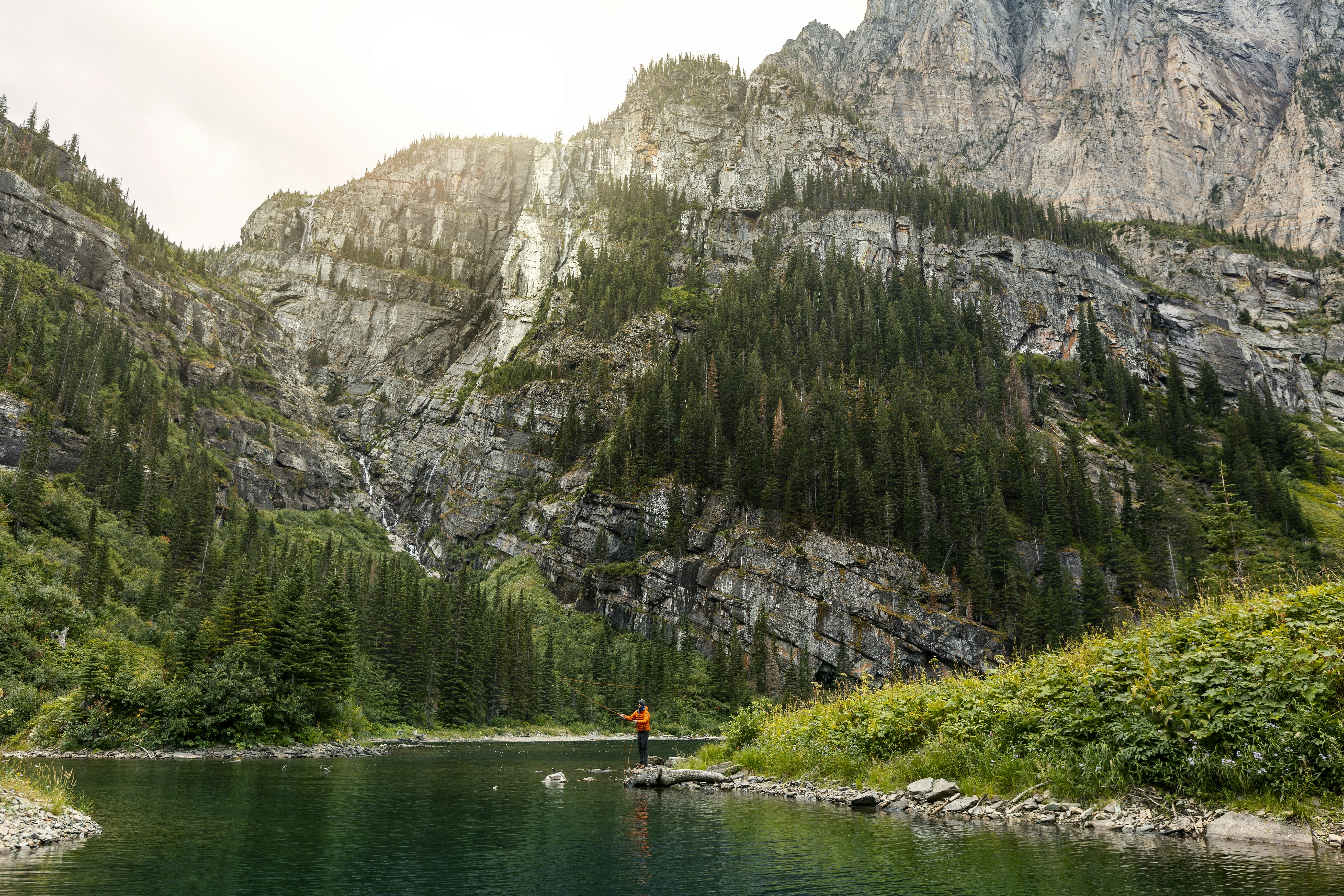
6. Missoula
Best place to fly-fish blue-ribbon waterways
Missoula is a fly-fishing paradise at the junction of great trout rivers in western Montana. Local author Norman Maclean captured this ethos in his iconic 1976 collection of stories, A River Runs Through It, and Brad Pitt and Robert Redford revamped enthusiasm with the 1992 blockbuster movie.
Missoula has wonderful views year-round. During the summer season, you can hang around Caras Park on the Clark Fork River, and you might catch live music on Wednesday afternoons or Thursday evenings as part of the Out to Lunch or Downtown ToNight series. This beautiful community space is also home to the Saturday Farmers' Market and ground central for First Friday celebrations every month.
The Clark Fork, Bitterroot, and Blackfoot are world-class rivers within bicycling distance of Missoula, including tributaries like Rock Creek. Outfitters, such as Missoulian Angler, offer guided fly-fishing trips for first-timers and experienced anglers alike. Fishing spots and hatch dates are often discussed at local fly stores like Grizzly Hackle Fly Shop.
During autumn, the Blue Mountain Recreation Area and the University of Montana campus are prime spots for colorful fall foliage. In winter, Missoula places you within easy reach of several ski resorts, including Discovery Ski Area, Blacktail Mountain and Lost Trail Powder Mountain. In spring, Blue Mountain is also great for spotting wildflowers.
Planning tip: A valid fishing license is required to cast a line in a Montana waterway. Many guiding companies require you to purchase your fishing license before a trip, which can be done online.
7. Flathead Lake
Best place for summer traditions
Flathead Lake is hard to miss when visiting northwest Montana. It's the largest freshwater lake west of the Mississippi River in the contiguous United States, requiring at least a 40-mile drive from end to end. And with state parks, campgrounds, boat ramps, and small towns lining the route, it's often a central base for summer road trip traditions.
Looking for an adventure? Rent a kayak or book a charter to Wild Horse Island near the lake's western shore, and keep your eyes peeled for the feral residents.
Planning tip: Flathead cherries are one summer tradition not to miss. Cherry season is short and sweet in the Flathead Valley, with farm stands popping up near the shoreline in July through early August. Plan a visit to coincide with the Flathead Cherry Festival, typically the last weekend of July, for the full taste of these regional treats.

8. Red Lodge
Best spot for a scenic drive
The Beartooth and Absaroka Mountains set the tone for the tourist-friendly town of Red Lodge in southern Montana, near the Wyoming border. These picturesque peaks, some of the tallest in the state, have unlimited outdoor recreation opportunities. And the seasonal 68-mile Beartooth Highway offers parking lot access to all the wild terrain spanning from Red Lodge to Yellowstone National Park.
The Beartooth Highway is one of Montana's best road trips between late May and October 15. This All-American road tops out at nearly 11,000ft with prominent views of the glacier-caked Beartooth Mountains and tree-lined valleys. Hiking trails, viewpoints and summer skiing opportunities line the route, eventually connecting to the hydrothermal wonders of Yellowstone National Park via Cooke City.
9. Philipsburg
Best place to uncover gems of the Treasure State
Philipsburg is a picturesque mountain town on the Pintler Veterans' Memorial Scenic Byway, approximately halfway between Glacier and Yellowstone National Parks. Silver and other underground resources built this early Montana town in the 1860s, and that era still resonates down Broadway St with antique storefronts housing modern shops and restaurants.
Montana Sapphires are still mined in Philipsburg, and visitors sift for their own at places like Gem Mountain and Montana Gems of Philipsburg. Here, buy a bag of gravel sourced from nearby sapphire mines and head to the washing station to uncover personal treasures. Shops will cut and polish anything you find, though nothing is guaranteed in sapphire mining.
You can also find a sweeter type of treasure in Philipsburg within hundreds of glass jars lining the walls of the Sweet Palace. This nostalgic candy store sells homemade confections like fudge and saltwater taffy – you'll get a sugar high from the aroma alone.

10. Little Bighorn Battlefield National Monument
Best spot for history buffs
If you’re interested in American history, then you need to add Little Bighorn Battlefield National Monument to your Montana itinerary. In June 1876, US Army General George Custer infamously made his “last stand” against the combined forces of the Lakota, Northern Cheyenne and Arapaho tribes. Ultimately, Custer and some 267 additional US troops died, along with at least 31 Native American fighters. The Native American tribes claimed victory in this battle, though US forces ultimately annexed all their tribal lands spanning from Montana to Nebraska the following year.
At the monument, which is about 62 miles southeast of Billings, you can learn more of the real history behind the lore that’s come to define the battle fought on this land, and you can learn more about the Indigenous communities who continue to call this region their home. This June, the monument will commemorate the 150th anniversary of the Battle of Little Bighorn with events and programming on June 25-27, coinciding with the opening of a new visitors' center.

11. Big Hole National Battlefield
Best place for learning about Native American culture
Little Bighorn may be the better known battle site, but Big Hole National Battlefield is another key place in Montana to learn about Native American history and culture. On August 9, 1877, a group of sleeping Nez Perce (or Nimiipuu) campers awoke to gunshots. Though these Native Americans had already fled their ancestral land in Idaho, US troops proceeded to attack their Montana encampment and kill at least 70 Nimiipuu people. Though Nimiipuu fighters mounted a fierce defense as they attempted a full escape into Canada, they ultimately surrendered to US forces in October of that year.
Detour: To learn even more about the Nimiipuu people, their history, and their enduring cultural heritage, the Nez Perce National Historical Park has additional sites worth visiting across their traditional homeland, spanning from Montana to Oregon.
12. Helena
Best place for a quick stop
Offering a convenient mid-point between Yellowstone and Glacier National Parks, the state capital of Helena is a worthy destination to spend some time exploring. As a Continental Divide Trail Gateway Community, you’re sure to find plenty of hike and bike trails to traverse – highlights include Mount Helena City Park (which climbs up to 5468ft above sea level) and the nearly 6-mile-long Mount Helena Ridge Trail.
If you prefer exploring in town, you’ll probably want to make time to tour the ornate and historic Montana State Capitol, the elegant Queen Anne-style Original Governor’s Mansion, catch a show at the Grandstreet Theatre and The Myrna Loy (which once served as the county jail), and hunt for vintage treasures at the Golden Girls Antiques Mall.

13. Garnet Ghost Town
Best place for ghost-hunting
About 40 miles east of Missoula, you’ll find one of Montana’s best-preserved ghost towns – Garnet. It sprang to life during the region’s 1890s gold rush and though there's no longer gold in these hills, you will find over 30 structures that have survived Garnet’s boom and bust. You can hike and bike the local trails, and hunting and fishing are allowed in the area.
While Garnet Ghost Town is open year-round, the area is often only accessible via snowmobiles, snowshoes and cross-country skis during winter. If you want to extend your stay, the US Bureau of Land Management (BLM) has two rental cabins available December-April. Camping is allowed for up to 14 days on designated public lands outside Garnet.

14. Medicine Rocks State Park
Best park for geology fans
Usually, visitors flock to Western Montana to explore the state’s most famous national parks and ski resorts, but Eastern Montana has some incredible landscapes of its own. Such is the case at Medicine Rocks State Park, located roughly between Devils Tower National Monument (in Wyoming) and Theodore Roosevelt National Park (in North Dakota). It's also an International Dark Sky Sanctuary.
The park’s name refers to the soft sandstone rock formations that rise about 60 to 80ft from the ground. Many have holes and undulations, and some even have natural tunnels. Medicine Rocks has fossils dating back 63 million years, and this land has long been held sacred by many of the region’s Native American tribes, including the Cheyenne and Crow peoples. If you’d like to extend your stay, the park does have RV and tent campsites available for reservation.







